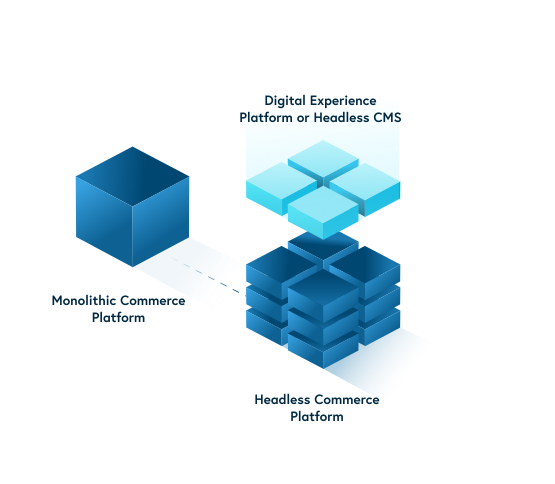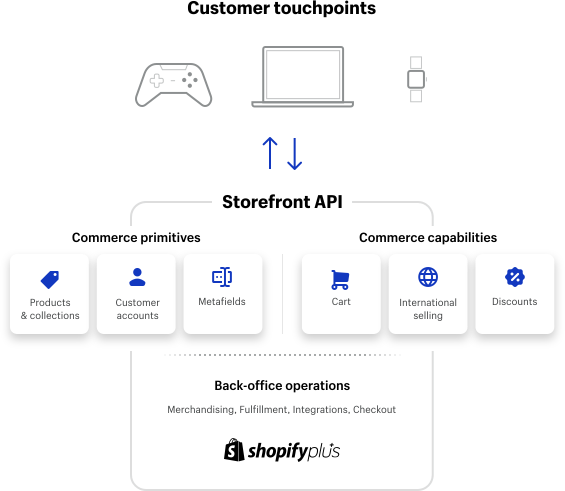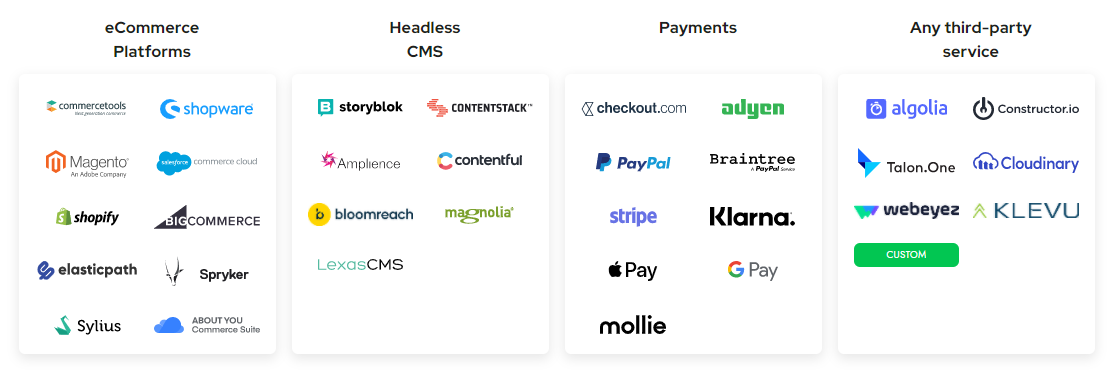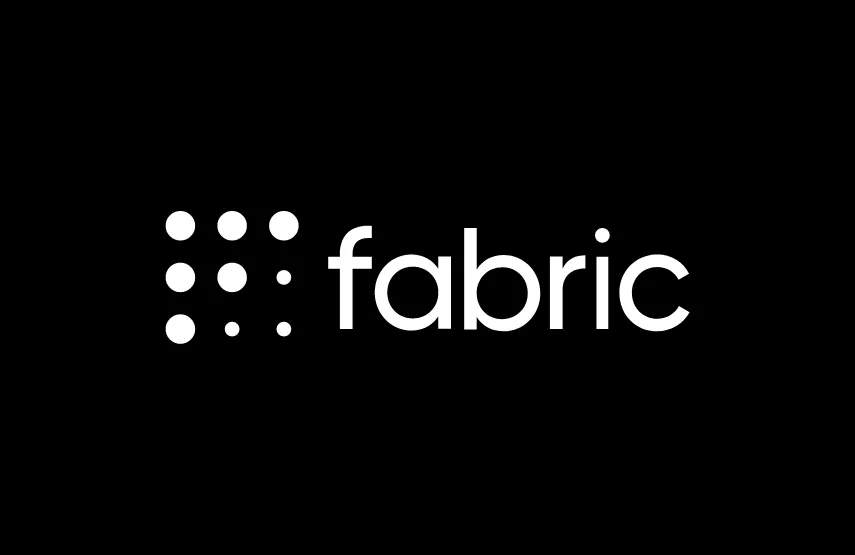Top Headless Commerce Platforms

In the ever-expanding lexicon of the digital experience stack, there's never been a word more apropos than "headless."
One might say it's perfectly cut for the job, describing a strange danse macabre betwixt the frontend presentation layer – the so-called "head" – and the backend functionality of an application framework.
Put another way for horror movie enthusiasts: the head has been chopped off the body.
Queue the blood-curdling screams...
Perhaps it's fitting, then, that this article is being published on a moonlit eve just before Halloween, a holiday where being headless evokes a certain infamous horseman (see Washington Carver's "The Legend of Sleepy Hollow" or the melodramatic, darkly-lit Tim Burton film).
While 18th-century American folklore might seem incongruous to modern application architecture, they're not that disparate. Headless has reached its own legendary status, conjuring near-magical abilities to transform frontend content or experiences across multiple channels through the power of APIs. It first broke the spell of monolithic systems like the CMS, carving out built-in templates and making it possible to power any frontend across the omnichannel – from apps to IoT devices and more.
But the plot thickens, foolish mortals! In today's tale, we take you into the realm of retail and online shopping, where "headless commerce" is rising in popularity. We'll explore what it is and how it works – and share some of the top platforms that are enabling users to build rich, multi-channel commerce experiences with a wide range of features and capabilities.
Keep reading... if you dare...
A brave new world of retail and commerce challenges
According to IBM's U.S. Retail Index data, COVID-19 has accelerated retail trends by nearly five years. You read that right: five years. e-Commerce sales were already skyrocketing before the pandemic – and while fast-forwarding can have unexpected benefits, global supply chains have struggled to keep pace with the race to recovery.
As companies accelerated their digital transformation strategies, the retail industry – hit hard by the shutdown of brick-and-mortar storefronts – drove the leap to digital commerce. To be sure, many organizations already had an integrated strategy for selling in both physical and online stores; in the throes of the pandemic, those online stores became their only channel, and they invested heavily in e-commerce software solutions that could amplify their capabilities and be quickly deployed.
The rapid shift to online channels helped retailers weather the storm, but it also enabled them to game efficiencies and grow. It also dramatically leveled the playing field, allowing new players to enter the market faster than ever with complete online ecosystems for selling, transacting, and fulfilling.
Today, e-commerce tools enable almost anyone to launch a dropshipping business from their own home, sell their own merchandise in a curated storefront, or go big and scale an entire online business.
Despite all of these amazing opportunities, the challenges that digital retailers and entrepreneurs face have also increased significantly. It's no longer a side hustle to man your digital store – it's now a necessity, and that means having smart people who understand the essential strategies and the right stack of tools.
There's also more noise online as new stores pop up daily, fighting for mindshare. And now, when almost anyone can create a digital commerce model, differentiation is being established through personalized customer experiences that drive conversions, build loyalty, and keep shoppers on your site.
So what exactly is "headless commerce," anyway?
Like we've already said, "headless" is quite the word, and completely fits the bill when describing this framework.
Much like headless CMS platforms, headless commerce systems separate the frontend "head" from the backend "body" – otherwise known as the content repository. Content in a headless platform is delivered through APIs, allowing it to be displayed across different devices and endpoints.

Tapping the omnichannel is at the core of headless commerce. Buyers are browsing in multiple places, and you need to be ready at every endpoint to engage them on their journey. Decoupling the frontend means any endpoint becomes a part of your ecosystem; it also means that you won't have to re-platform from a tightly-coupled monolithic solution that limits your API-first scalability.
One of the other big advantages of a headless commerce strategy is having an agile framework for e-commerce – giving brands the ability to test, experiment, and optimize based on different audiences. It also gives sellers the freedom to customize their various channels, from websites to apps, without impacting the backend.
There are a few different ways in which headless commerce can be delivered:
- Headless storefronts: A headless storefront uses a third-party static site framework like React or Vue (think JAMstack), and is completely independent of any platform – allowing it to be integrated in a multitude of ways. For example, a Vue Storefront can be integrated with a Magento and Pimcore backend – allowing the e-Commerce engine to power the frontend website. Headless storefronts are especially handy when used with a headless PWA (Progressive Web App), which are Javascript-based web applications that provide the look of a mobile application while running on a web browser. PWAs provide a faster, more seamless customer experience, making them a preferred model for headless storefronts.
- Headless Content Management Systems (CMS): Unlike a traditional CMS, a headless CMS can deliver content through APIs, allowing it to be displayed across different devices and endpoints. This makes it easier to manage multiple channels not just for content, but for products and services in digital storefronts.
- Digital Experience Platforms (DXP): A DXP is commonly defined as an integrated set of core technologies whose goal is to support the creation, management, delivery, and optimization of customized digital customer experiences (DCXs). DXPs have a much stronger focus on customer experience and combine different components such as CMS, DAM, e-commerce, CRM, CDP, AI, and other various technologies. A headless solution combined with a DXP can produce very powerful results. Likewise, some DXPs offer multiple APIs to use within a headless experience. All that said, due to their comprehensive nature, DXPs tend to be much more expensive and tend to appeal to larger enterprises.
- E-Commerce Platforms: Unlike CMS and DXP platforms, e-commerce platforms focus heavily on the buying and transacting side of the ledger. While many e-commerce platforms offer a frontend website solution or builder – making them a kind of CMS – they provide a much deeper set of tools and resources for creating and managing online stores. Shopify and BigCommerce are some of the most visible players in the e-commerce space, but there are many solutions across the market.
Headless vs. traditional e-commerce
While there might be a compelling reason to deploy a traditional e-commerce platform for a website or app, headless presents a strong case for dumping the frontend and embracing a truly "channel agnostic" strategy.
Flexible frontend experiences without limitations
With traditional e-commerce, developers are often constrained by the frontend process within the platform itself. By decoupling the frontend from the backend – and delivering content via API calls – you can create highly customizable experiences that can be personalized to your audiences.
A headless solution also allows developers to build a store once, and via APIs, push content and information to any frontend. This goes beyond web browsers and mobile devices to include new channels of engagement like wearable tech, "car commerce," IoT devices (e.g., smart appliances, TVs, Amazon's Alexa, etc.), smart screens and kiosks, and third-party apps running on almost any platform (like social media networks).
That's a lot of stuff, but hey, that's what consumers want: choice. To buy where they want, when they want. As endpoints keep growing, so will the possibilities – and having a headless commerce strategy will help futureproof your business for whatever channels your customers prefer to buy from.
Faster content delivery
We already know that slow websites and lagging load speeds can add up to a bad customer experience. It doesn't only lead to cart abandonment; in fact, most people will bale on a website if it takes more than just 2 seconds to load.
Here's where headless really knocks it out of the park. With APIs, you're only pulling the content you need – and nothing else. The entire process of loading a bunch of server data is unencumbered, allowing for blazing-fast delivery over traditional e-commerce platforms.
The top headless commerce platforms
Now that we've covered what headless commerce is and its advantages, let's take a look at some of our top picks you should consider evaluating.
1. Shopify

As the most popular e-commerce platform, Shopify is a powerful solution that caters to both small and mid-sized businesses. While Shopify itself is a traditional e-commerce platform, it now provides a more personalized experience with its headless offering, Shopify Plus – a fully hosted SaaS solution built to handle any level of volume, allowing merchants to expand their channels and focus on growing their business.
Shopify Plus has all the capabilities that come with the basic Shopify, but its headless features separate the backend infrastructure from any frontend customer touchpoints – so you can build new selling opportunities anywhere and manage it all from a central location.

Product features
As a fully hosted enterprise platform, Shopify Plus is geared for merchants selling in high volume.
Speed and efficiency: Design fast, engaging storefronts for web, mobile, video games, and beyond with the GraphQL Storefront API. Plug in the tools and systems your business relies on, like your ERP, PIM, CRM, and CMS, and bring your own tech stack so your team can build quickly using the tools they prefer. You can also juice up your store's capabilities with Shopify's open API. It's worth noting that all brands on Shopify Plus can access exclusive APIs and double their API call limit. And with developer support, you can also build your own private apps tailored to your store's unique challenges.
Reliability: Shopify Plus offers unlimited bandwidth and web hosting with a global content delivery network, cloud-based infrastructure, fast global servers, and automatic platform updates so you can focus on growing your business.
Pricing: As powerful and efficient as Shopify Plus is, it also comes at a hefty price of $2,000 per month. This puts it more in the mid-size to larger enterprise category, where high selling volumes are standard fare. If you can't justify the cost for Shopify Plus, there's an alternative called Shopify Lite, which costs only $9 a month and utilizes the Storefront API, built on GraphQL. Shopify Lite includes access to the Shopify Admin, which you can use to manage your business. The Shopify Lite plan also includes the "Buy Button" and Shopify POS Lite sales channels, as well as a ton of features like finance reports, email carts, QR code details, and more.
Get the details on Shopify Plus at https://www.shopify.com/plus.
2. BigCommerce

BigCommerce is a big name. The popular cloud e-commerce platform seamlessly integrates with Google, Amazon, eBay, Facebook, WordPress, Walmart, and many others – and already offers a headless play. With BigCommerce, the presentation layer is natively decoupled from their core commerce engine, giving you the freedom to simultaneously run multiple stores across various front-end solutions, all from a single BigCommerce account. You can deliver API-driven experiences through your CMS, DXP, application, or custom frontend with BigCommerce powering the backend commerce engine.
Product Features
The biggest appeal of BigCommerce is its user-friendly interface and ability to integrate with various platforms.
API-Driven Commerce: Connect your WordPress site to BigCommerce's powerful commerce engine with a pre-built plugin for brands with an editorial or content focus. BigCommerce also has an Acquia Digital Experience integration, offering headless commerce in both React or Vue to maintain full control of your site.
Marketplaces: Sell where your customers are shopping by integrating with top marketplaces such as eBay, Amazon, and Google Shopping.
Multi-Storefront: Easily switch between storefronts with a single login.
Social Commerce: Capture more customers on social channels with Facebook, Pinterest, and Instagram integrations.
Brick & Mortar: Keep in-store sales automatically updated with native POS systems, including Teamwork Commerce and more.
Pricing: You can try BigCommerce for free for 15 days. BigCommerce offers various pricing plans starting from $29.95 per month and goes up to $299.95 per month for Pro plans.
Learn more about BigCommerce at https://www.bigcommerce.com/
3. Vue Storefront

Vue Storefront is an API-focused front-end eCommerce platform. It's also an open-source Progressive Web Application (PWA) and can be connected with almost any third-party services. Vue Storefront is developed in two lines: as the open source standalone code library based on Vue.js, and as the cloud-native front end as a service (FEaaS) dedicated to enterprises.
Vue Storefront is the fastest-growing open-source e-commerce frontend. What sets Vue Storefront apart is that it's lightning-fast and can be connected to so many e-commerce services:

As an API-first solution, Vue Storefront is a perfect fit for any headless commerce platform. Vue Storefront is also a part of the MACH Alliance, a community of tech vendors and software providers advocating Microservices, API-First, Cloud-Native, and Headless (MACH) framework for digital experiences.
Product Features
Built with a PWA and headless model, Vue Storefront uses a modern Javascript stack and offers custom integrations with Magento, commercetools, Shopware, and Shopify. Its API-first approach allows you to merge Vue Storefront with any third-party tool like CMS, payment gateways, analytics, and more.
Open Source: With no license and vendor lock-in, the sky is the limit: build what you like, and you'll always own your site.
Headless and API-focused: Connect to any back-end and merge with virtually any third-party tools.
Progressive Web App Model: Vue Storefront powers shopping experiences like native apps while boosting site performance and customization.
Modern Frontend: Vue is ready-made for almost any frontend experience, and futureproofs you for what's next.
Pricing: Because it's open source, Vue Storefront is completely free. If you're looking for scalable solutions for your enterprise e-commerce, you can contact their sales team.
Learn more at https://www.vuestorefront.io/
4. commercetools

commercetools was one of the first headless commerce platforms, delivering a decoupled, open environment that now enables limitless commerce capabilities across all channels. commercetools also embraces the MACH principles, providing a truly open, modular environment that enables businesses to embrace innovation and respond to change quickly – and with less risk.
Product Features
Headless Platform API: commercetools provides easy API-first integrations. The commercetools platform was designed for the use of APIs as a primary focus, meaning they are robust, work efficiently and reliably, and are very well documented. They also work with GraphQL, a layer that sits on top of APIs and complements them seamlessly.
Cloud-native: commercetools is built in the cloud, for the cloud. That means infinite scalability, no upgrades, and the ability to extend and customize the commerce experience to meet your customer's needs and behaviors.
Machine Learning (ML): Machine learning technologies leverage your data by providing the power to analyze patterns at scale. commercetools utilizes ML to deliver product recommendations, personalized promotions, and on-demand offers.
Pricing: commercetools doesn't have an upfront pricing plan. It is designed for large, complex organizations, so you need to get custom pricing for your business. That said, you can try it for free here.
5. Magento

Especially popular among developers, Magento is one of the best-known and most widely used e-commerce platforms. Many big companies such as Ford, Bvlgari, Land Rover, and Liverpool use Magento. With such notable brands and a great customer footprint, it's no wonder that Adobe bought Magento in 2018 for $1.68 billion.
Product Features
Magento Commerce provides flexible options with a traditional coupled storefront, a decoupled storefront in their PWA Studio, compatibility with Adobe Experience Manager, and robust APIs to build out custom digital touchpoints.
PWA Studio: Use Magento's PWA Studio to build Progressive Web Apps and take advantage of Magento Commerce's integrated content tools like Page Builder.
Adobe Experience Manager: Leverage Adobe Experience Manager to layer in complex, personalized customer journeys and content-led experiences.
Cross channel: Build a custom frontend to surface commerce experiences in new digital touchpoints like IoT, AR/VR, or other connected interfaces.
Third-Party Integrations: Magento has a large ecosystem of partners, allowing it to integrate with an alternative third-party headless CMS or frontend platforms to deliver the experience. It also offers thousands of e-commerce extensions and themes designed by over 450 developers, including extensions for customer support, payments and security, marketing, accounting and finance, shipping and fulfillment, and site optimization. With Magento, you know you're getting a high-quality platform that's carefully curated, with every extension checked for plagiarism, coding standards, compatibility, and security.
Pricing: You can get a demo and try out Magento, but they don't publicly list any pricing plans. To get an estimate for your specific needs, contact their sales team.
6. Elastic Path

Elastic Path is a leader in the headless e-commerce space with its composable, API-first headless commerce platform. The microservices-based system is specifically targeted towards enterprise-level organizations.
Product Features
Composable Commerce: Elastic Path features a fully composable commerce solution. is a modern approach by which e-commerce teams are empowered to select and assemble various "best of breed" solutions and compose them to meet their exact business requirements. Instead of trying to force-fit standard "out-of-the-box" e-commerce functionality to fit your needs, Composable Commerce leverages modern technologies and approaches like MACH and JAMstack (JavaScript, APIs, & Markup) architectures to adapt to rapidly changing market dynamics – now and in the future.
Pricing: Elastic Path is built for large enterprise organizations. That means no public pricing, so you'll need to request a custom quote. That said, their pricing is based on your transaction volume and can be calculated using GMV (Gross Merchandise Volume) or the number of orders you process.
7. Bloomreach

Bloomreach is a DXP with a mission: to arm enterprises with a superior weapon in their battle against the Amazons of the e-commerce world. Their commerce gives retailers, brands, distributors, and manufacturers the ability to offer a highly relevant and personalized digital experience – with speed and scalability. They enhance their commerce offering with AI-powered search, intelligent merchandising, and highly agile content management.
Bloomreach's DXP for Commerce helps keep customers engaged, increases revenue per visit, and drives customer loyalty. It also integrates with leading commerce platforms to form a complete e-commerce solution. Now, with Bloomreach Experience (brX), organizations have access to rich features, all powered by an API-first headless architecture. This makes it easier for brands to integrate Bloomreach with their existing commerce platform and frontend technologies, and avoid many of the rigors of re-platforming everything.
From a data perspective, Bloomreach is investing in a big way by acquiring acquired Exponea, a Customer Data and Experience Platform (CDXP), in early 2021. With the acquisition, Bloomreach has integrated its market-leading e-commerce capabilities with Exponea's best-in-class customer data (CDP) and marketing automation platform. This combination has the potential to accelerate the creation, personalization, and optimization of powerful commerce experiences – and drive rapid growth for both B2C and B2B brands.
Product Features
Powerful content management platform: Bloomreach offers a dynamic content platform built for commerce. Their content platform has many features such as a drag-and-drop builder, widgets to insert a product showcase, a product grid, a recommendations widget that can be added on any page with just a few clicks, and other pre-built components.
Personalized content and products: With Bloomreach Engagement, you can unify all your customer data and deliver connected customer experiences with a single solution. Use segment data to build audiences and target the right customer, A/B tests to see what works, and optimize your performance. Bloomreach Engagement also provides a CDP (Customer Data Platform), AI (Artificial Intelligence), marketing automation, and conversion rate optimization.
Commerce-specific AI engine: Backed by a commerce-specific AI engine that is powered with 12+ years of data, Bloomreach helps you create a sophisticated product discovery experience so customers can find and convert on products faster. Go beyond the search box with modules for advanced merchandising, smart product recommendations, and SEO improvements. Bloomreach also partners with the other leading headless commerce platforms such as the Salesforce commerce cloud, SAP, commercetools, Elastic Path, and BigCommerce.
Pricing: Bloomreach doesn't offer pricing on their website, but they do indicate that the pricing model is based on the number of customers you serve, the size of your product catalog, and the number of events you execute (such as how many emails or SMS messages you send).
To request pricing, you can fill out their form.
8. Fabric

A relative newcomer to the headless commerce space, Fabric is already making a lot of noise with a great product offering. The company recently launched its cloud-native experience and commerce product suite – and announced $43 million in Series A funding.
Fabric's headless commerce platform enables marketers and merchants to deliver world-class commerce experiences without the engineering burden. Its modular API-first platform enables brands to utilize tools that address their specific needs rather than re-platforming.
Product Features
REST API: Fabric's APIs are based on REST (Representational State Transfer) architectural principles and follow standard REST practices. The Fabric platform also offers a complete set of commerce APIs that allow brands to orchestrate their offerings across all channels, enabling them to support the entire lifecycle of each customer.
A suite of commerce tools: Fabric gives brands sophisticated capabilities with its Experience Platform Manager (XPM), Product Information Manager (PIM), pricing and offers, and Order Management (OMS).
Highly scalable serverless infrastructure: From a cloud perspective, Fabric runs on a completely serverless environment – allowing customers to scale during high-traffic retail peaks, which can occur due to seasonality or supply chain issues.
Pricing: Fabric is great – but it's pricey, starting at $6000 a month per user. But don't let that scare you; request a demo to see what it's all about.
Conclusion
As we rest our knives from carving jack-o-lanterns, we're reminded of the tedious challenges companies face when evaluating and selecting software.
That's why we take the time to analyze a wide range of products in our pursuit of the top considerations. That said, it should be comforting to know that the majority of platforms highlighted in our headless commerce list are also "Leaders" on the 2021 Gartner Magic Quadrant for Digital Commerce:

When selecting a headless commerce platform, there are several important factors to consider. Of course, the cost is a big one – and many of the leading tools are on the expensive side, catering to high-volume enterprise storefronts. That's why opportunities to demo are crucial.
When you evaluate the time to implement a solution, consider the number of integrations the platform offers, how user-friendly it is, the level of support it provides, and how fast and scalable the platform is. The opportunities are endless, and expanding your sales channels will only improve your bottom line. But if the pandemic taught us anything on the digital frontier, it's that time is of the essence.
Finally, don't be scared of headless! With the right strategy and the right platform, there are no tricks – just treats.